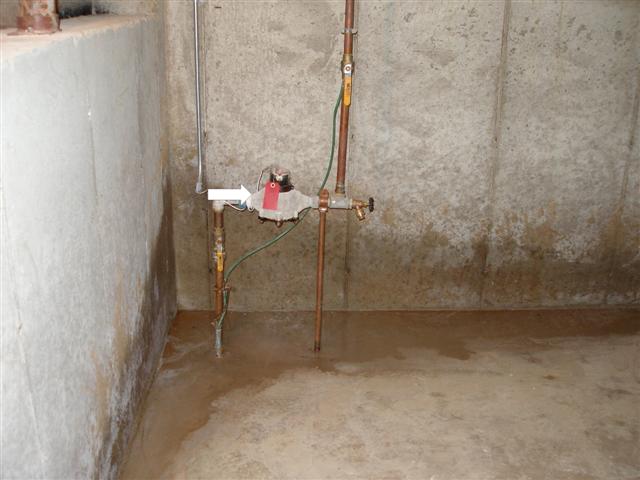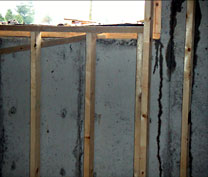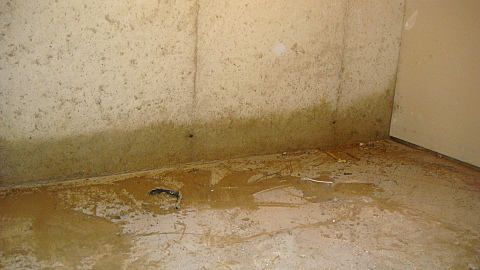Thanks for all of your thoughts- It wasn’t my intention to troubleshoot the possible contributors, but rather just to assure myself that this wasn’t a rare but acceptable phenomena that I just have not come across over the last 25 years. Here’s the relevant portion of my narrative to the client:
On June 11, 2008, I performed an inspection of the above captioned property. The inspection was limited to the concrete foundation walls, concrete floor, and exterior site. The purpose of the inspection was to substantiate the concerns of the client regarding moisture in the basement.
BACKGROUND:
The client provided the following information regarding the construction of the subject property:
-Walls poured early April 2008.
-House built and “in the dry”, basement floor placed first week of May.
-Finish grade June 1.
-Persistent dampness and even liquid water has been present since floor was poured.
-Neighboring homes present basements that are substantially dry in comparison.
CONDITIONS:
The foundation walls are poured concrete with typical brick embossing on interior and exterior above grade. Form ties have been removed. Floor is concrete, steel trowel finish. A sump pump exists and appears to be serving exterior footer drains. No interior drains are apparent.
All walls and the perimeter floor are considerably damp. Many areas are wet with liquid water. Efflorescence is forming and is an indication that the dampness is continuous or cyclical.
The exterior is graded and is awaiting topsoil and seeding. Many voids along the exterior foundation backfill reveal what appears to be spray applied damp proofing. It should be noted that damp proofing is not the same as waterproofing according to ICC / IRC.
The interior humidity within the basement measured 68% @ 67 Degrees.
FINDINGS:
The conditions that may lead to excess interior moisture are many, but are likely to be:
-Latent moisture evaporating slowly from poured concrete.
-Condensation formed as moisture-rich air encounters the cool foundation walls.
-Ground water is entering through the foundation walls due to inadequate damp proofing or water proofing.
- Ground water is entering through the floor or at the floor / wall intersection do to inadequate sub-slab water control or omitted vapor barrier.
RECOMMENDATIONS:
To facilitate further diagnostics, it is necessary to achieve relative dryness. I recommend forcing the area to dry though mechanical means. Dehumidification may be achieved by operating dehumidifiers along with the central air conditioning. Air between the basement and the living space should be mechanically communicated. Alternatively, vast amounts of outside air may be introduced to induce convective evaporation. I strongly discourage the use of super-heating as a method to dry this space. This method causes wood framing to twist and check. Further, the moisture-rich air created by super-heating often appears in other areas such as attic spaces, where it condenses.
Once the basement is dry for an appreciable period of time, I recommend concerted monitoring of new dampness, weather conditions, and interior and exterior humidity and temperature levels. If moisture reappears under normal conditioned home operation, further evaluation and corrective measures are likely necessary.
OPINION:
While I am unable to determine the precise cause of this issue, I am comfortable in stating that is unusual and unacceptable. While some sources claim it may take up to two years for concrete to give up it’s moisture entirely, I believe the majority of water that is not retained through hydration, is given up within 28 days. If in fact the source is the concrete itself, then I believe the dwelling may not be suitable for occupancy until such emission has run it’s course.
Some consideration must be given to the possibility of ground water entrance. I have professional doubts about the effectiveness of sprayed damp proofing at a site that appears to be at the foot of a natural slope. If ground water is present at or above the footer, then water proofing membrane may have been a better choice. Further, sub-slab water control methods may have been appropriate.
John Cundiff, CMI








